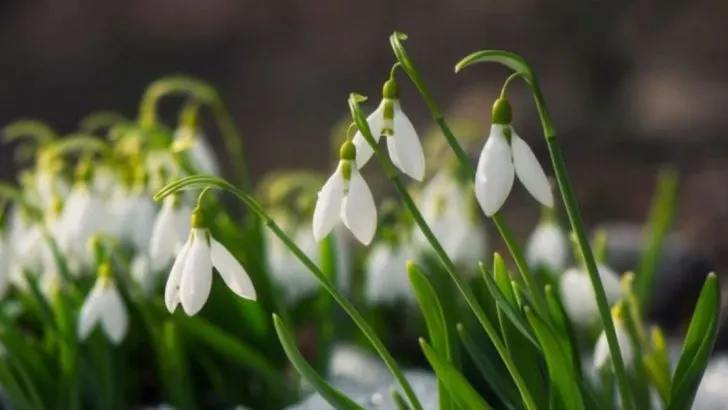The first blooms of spring bring a sense of renewal and warmth after the cold winter months. Certain flowers are known for emerging early, often pushing through the last remnants of snow to signal the changing season. These early bloomers not only add color to your garden but also provide essential nectar for pollinators just waking up. Here are 22 flowers that herald the arrival of spring with their vibrant and cheerful blossoms.
Crocus
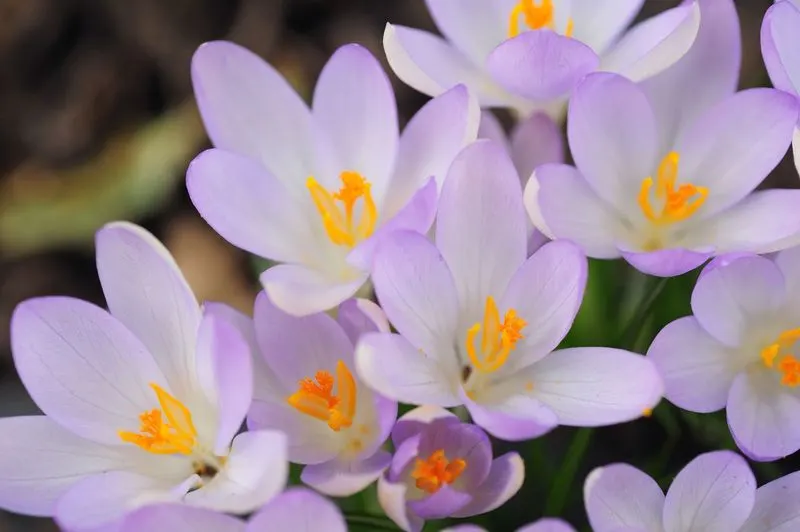
Crocuses are among the first flowers to break through the winter snow, offering a vibrant splash of color with their purple, yellow, and white petals. These hardy blooms often surprise gardeners as they peek through the last snow, a true testament to nature’s resilience. Planting crocuses in well-drained soil under the sun ensures their colorful display year after year. Surprisingly low-maintenance, they’re perfect for those who want early spring charm without fuss. Gardeners often find them a reliable sign that warmer days are on the horizon and love their ability to naturalize over time.
Snowdrop
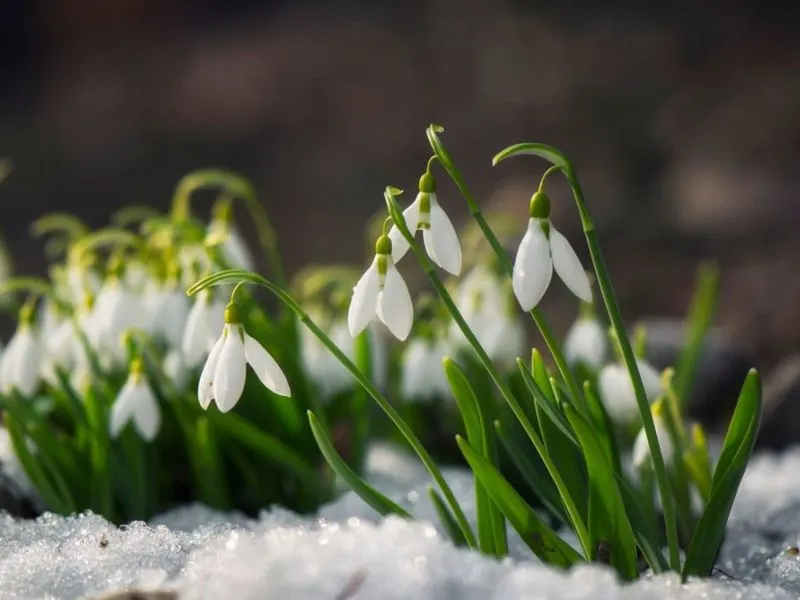
Snowdrops are delicate white flowers that symbolize hope and the end of winter. Their drooping blooms often appear while snow still blankets the ground, creating a striking contrast. Preferring shady spots, these flowers thrive under deciduous trees. Planting bulbs in the fall allows them to establish roots, ensuring an early spring display. Gardeners appreciate snowdrops for their subtle beauty and the promise of renewal they bring. Their resilience in cold conditions makes them a favorite among those eager to welcome spring. Whether in gardens or wild settings, snowdrops are a cherished sight.
Daffodil
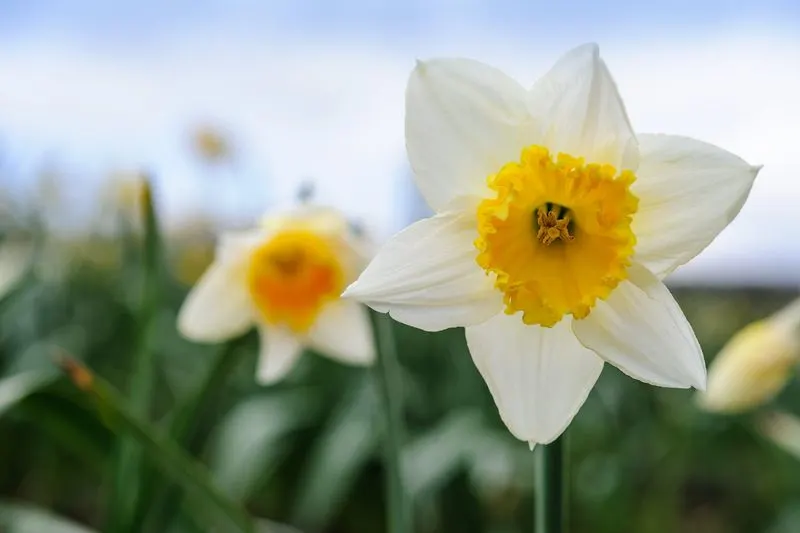
Daffodils are synonymous with spring, their sunny yellow petals brightening gardens and roadsides alike. These bulbs, planted in the fall, burst into bloom as the first warm days approach. Known for their cheerful appearance, daffodils are remarkably easy to grow. They’re often found in clusters, creating a sea of yellow that lifts spirits and heralds spring’s arrival. Perfect for borders or as cut flowers, daffodils require minimal care. Their vibrant presence is not just a visual delight but a promise of the season’s change from gray to glorious.
Tulip
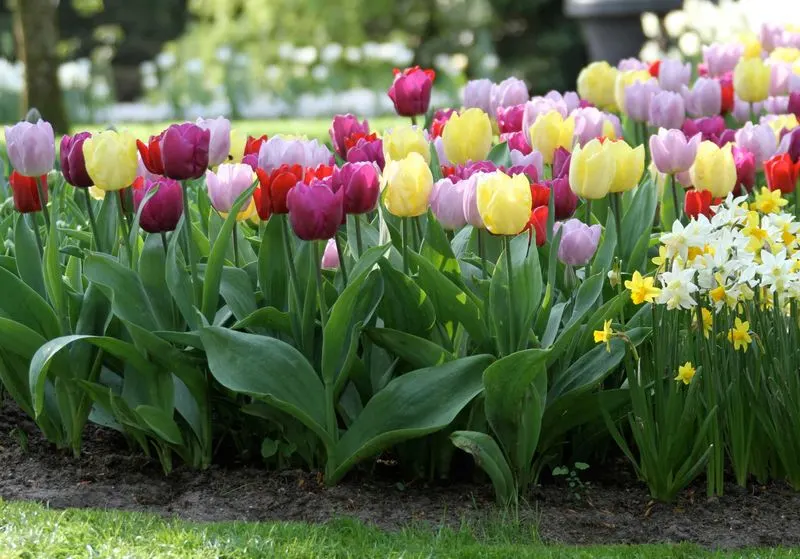
Tulips offer a spectrum of colors that fill gardens with life after the long winter. Their iconic cup-shaped blooms can be found in nearly every hue imaginable. Plant tulip bulbs in autumn for a robust spring show. These flowers prefer sunny, well-drained locations and benefit from a little planning. When tulips emerge, they transform gardens, creating a vivid, eye-catching spectacle. Their elegance and variety make them a favorite for gardeners seeking diversity. Whether in formal beds or naturalized settings, tulips add a touch of sophistication.
Hyacinth
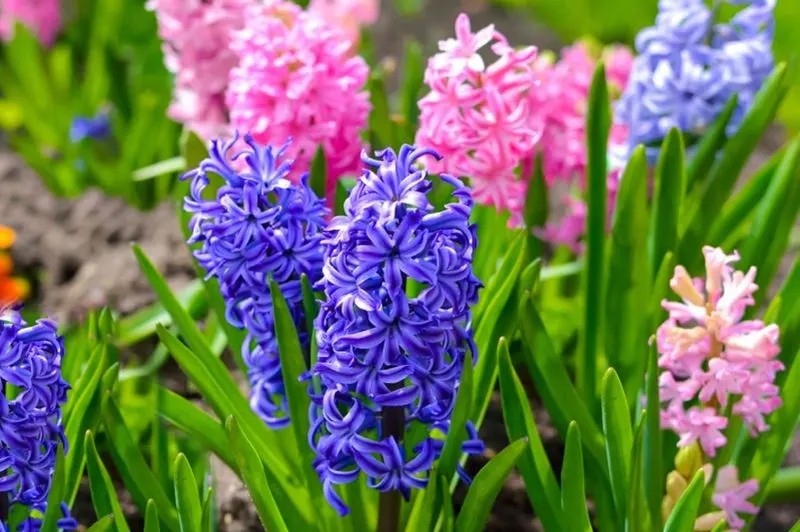
Hyacinths are celebrated for both their stunning blooms and intoxicating fragrance. These flowers create a sensory delight that signals spring is truly underway. Available in a range of colors, hyacinths are excellent for borders or containers. Plant them in autumn, ensuring they receive a period of cold to blossom beautifully. Their dense flower spikes are not only visually striking but also beloved for their scent. As one of the more aromatic spring flowers, hyacinths draw gardeners and passersby alike. Their fragrance lingers, offering a sweet reminder of spring’s bounty.
Primrose
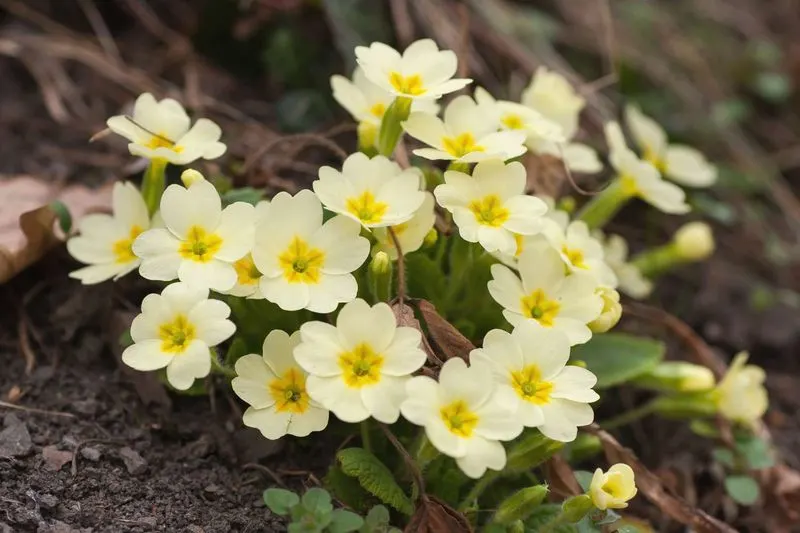
Primroses bring a cheerful burst of color to the early spring garden, thriving in both sun and partial shade. These versatile flowers can adapt to a variety of garden settings, from borders to rock gardens. Known for their array of vibrant hues, primroses are a gardener’s delight due to their easy care and prolific blooming. Their flowers attract pollinators, contributing to a lively garden ecosystem. With proper moisture and soil conditions, primroses flourish and multiply, creating a patchwork of color that welcomes the spring season.
Hellebore
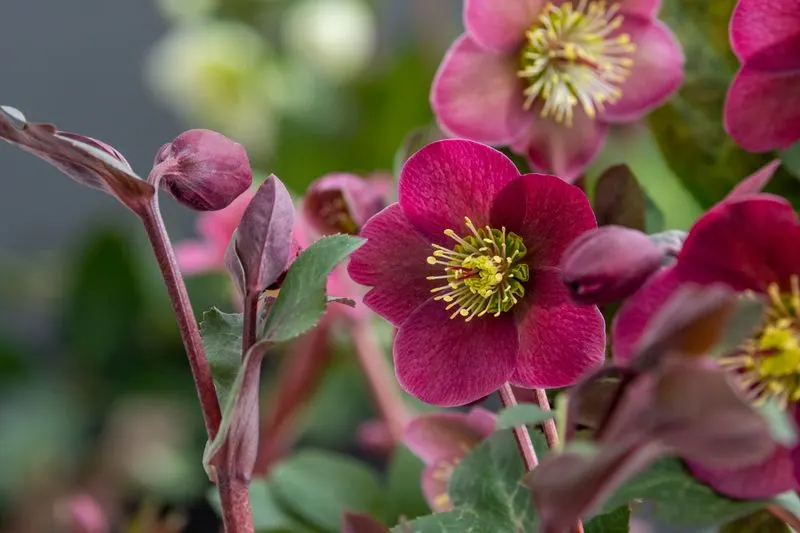
Hellebores, also known as Lenten roses, defy the cold with their early blooms, often appearing in late winter. These perennial favorites offer a palette of colors, from deep purples to soft pinks and whites. Their long-lasting flowers can thrive in shaded gardens, adding interest where other plants might struggle. Known for their resilience, hellebores require minimal maintenance once established. These blooms can handle frosty temperatures, making them ideal for gardeners looking for hardy options. Their unique beauty and durability ensure they remain a staple in spring gardens.
Forsythia
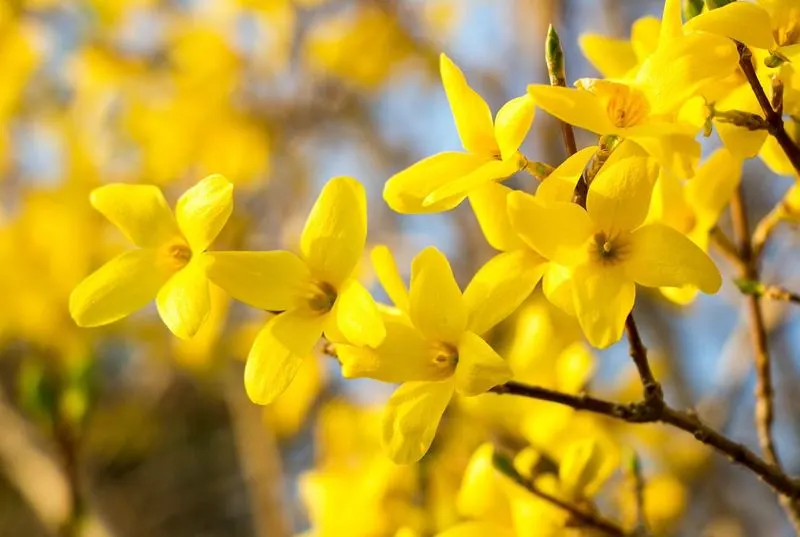
Forsythia is often the first shrub to bloom in spring, its golden-yellow flowers creating a stunning display. This hardy plant is known for its vigorous growth and ability to thrive in various conditions. Forsythia’s bright blooms are a welcome sight, signaling the end of winter’s dormancy. Ideal for hedges or as standalone features, these shrubs are low-maintenance and drought-tolerant. Pruning after flowering encourages a tidy appearance and abundant blooms. Their sunny hues draw attention from afar, making forsythia a garden favorite among those eager for spring’s arrival.
Magnolia
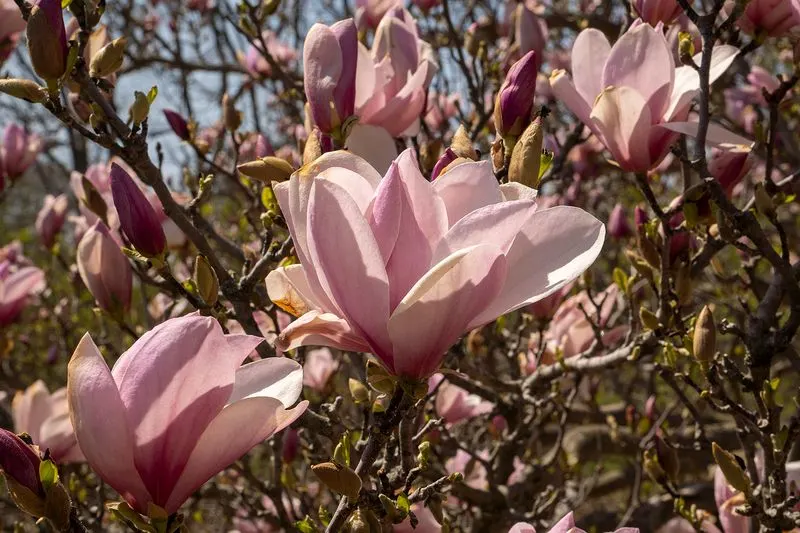
Magnolias captivate with their breathtaking, large blooms and elegant form. These trees are among the first to flower as spring approaches, making them a focal point in gardens. Magnolias prefer well-drained soil and a sunny position to thrive. Their flowers range from pure white to rich pinks and purples, adding a touch of elegance. Gardeners cherish magnolias for their architectural beauty and the delicate fragrance of their blooms. While some species are more sensitive to frost, the reward of their spectacular flowers is well worth the effort.
Cherry Blossom
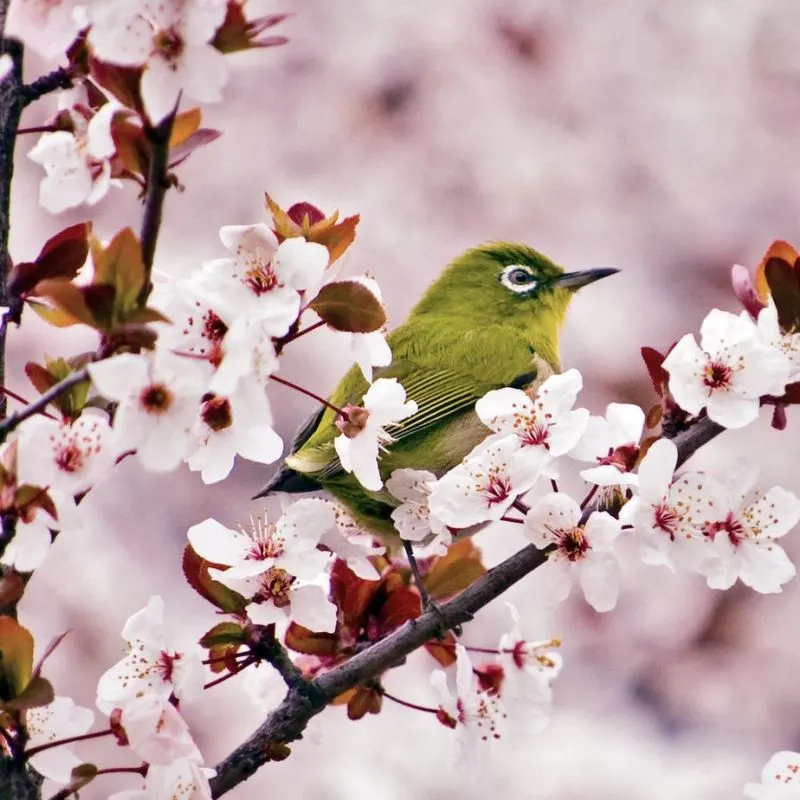
Cherry blossoms transform landscapes into pink paradises, marking spring’s arrival with their ephemeral beauty. These trees, celebrated in festivals worldwide, are known for their delicate blooms that last but a few weeks. Cherry blossoms prefer temperate climates and well-drained soil. Their blossoms not only add stunning visual appeal but also symbolize renewal and the fleeting nature of life. As petals fall, they create a picturesque scene that’s both romantic and serene. Whether lining streets or in gardens, cherry blossoms enchant all who witness their brief, magnificent display.
Pansy
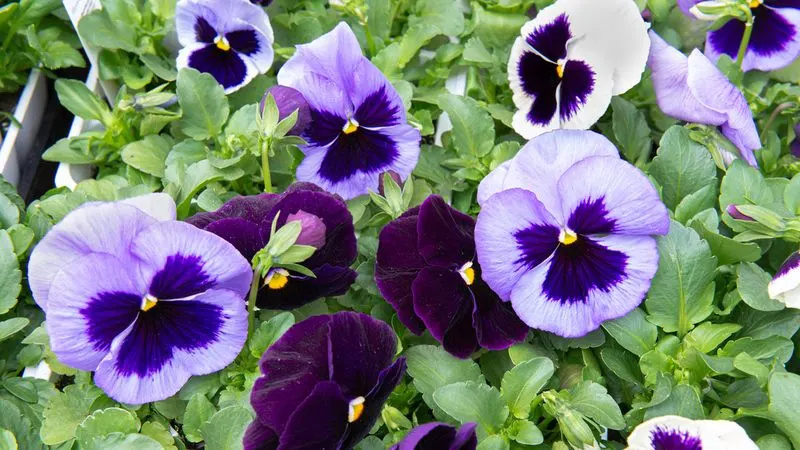
Pansies offer vibrant color combinations and charming ‘faces’ that delight gardeners and visitors alike. These hardy flowers bloom early, even in cool weather, making them perfect for containers or borders. Pansies thrive in well-drained soil and partial to full sun. With a rich palette, they offer endless possibilities for creative garden designs. Regular deadheading encourages prolonged blooming, ensuring a colorful display throughout the season. Ideal for novice and experienced gardeners, pansies bring whimsy and joy with their cheerful presence. Their resilience and beauty make them a spring staple.
Anemone
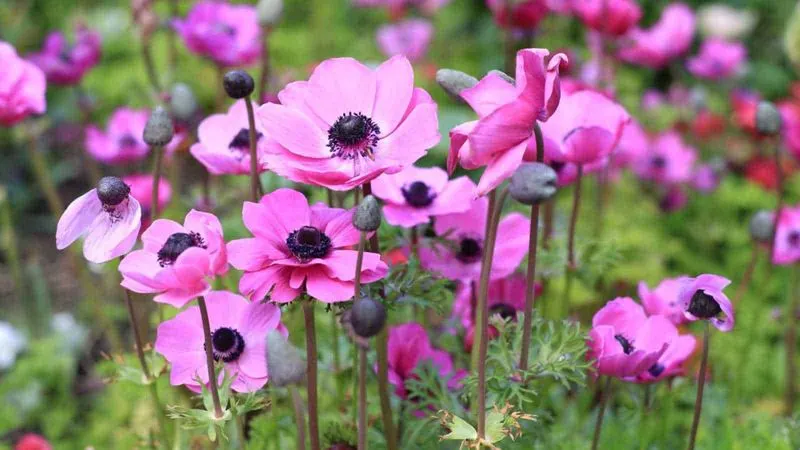
Anemones, known for their delicate, poppy-like blooms, add a touch of elegance to spring gardens. These flowers prefer well-drained soil and a sunny location. Anemones are versatile, fitting into rock gardens, borders, and woodland settings. Their variety of colors, from blues to whites and pinks, offers gardeners a wide palette to play with. Despite their fragile appearance, anemones are quite hardy, thriving even in less-than-ideal conditions. They are loved for their easy care and ability to naturalize over time, creating carpets of color year after year.
Iris Reticulata
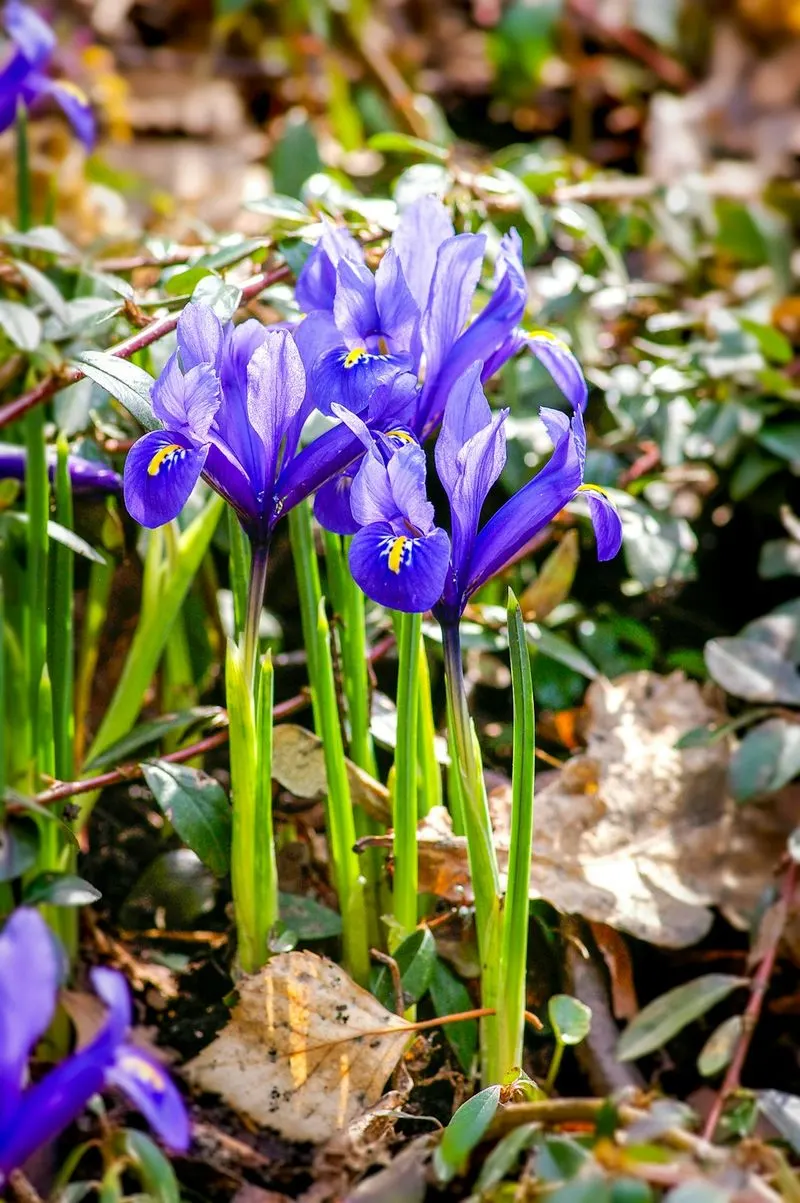
Iris reticulata, with their striking purple flowers and intricate patterns, bring a touch of sophistication to early spring. These petite irises are among the first to bloom, thriving in sunny, well-drained locations. Their vivid colors and unique markings make them a standout feature in rock gardens or as edging plants. Easy to grow, iris reticulata requires minimal maintenance while offering maximum impact. Their early blooms are a welcome sight after winter’s gray, adding vibrancy to the garden. Gardeners value them for their resilience and the burst of color they provide.
Violet
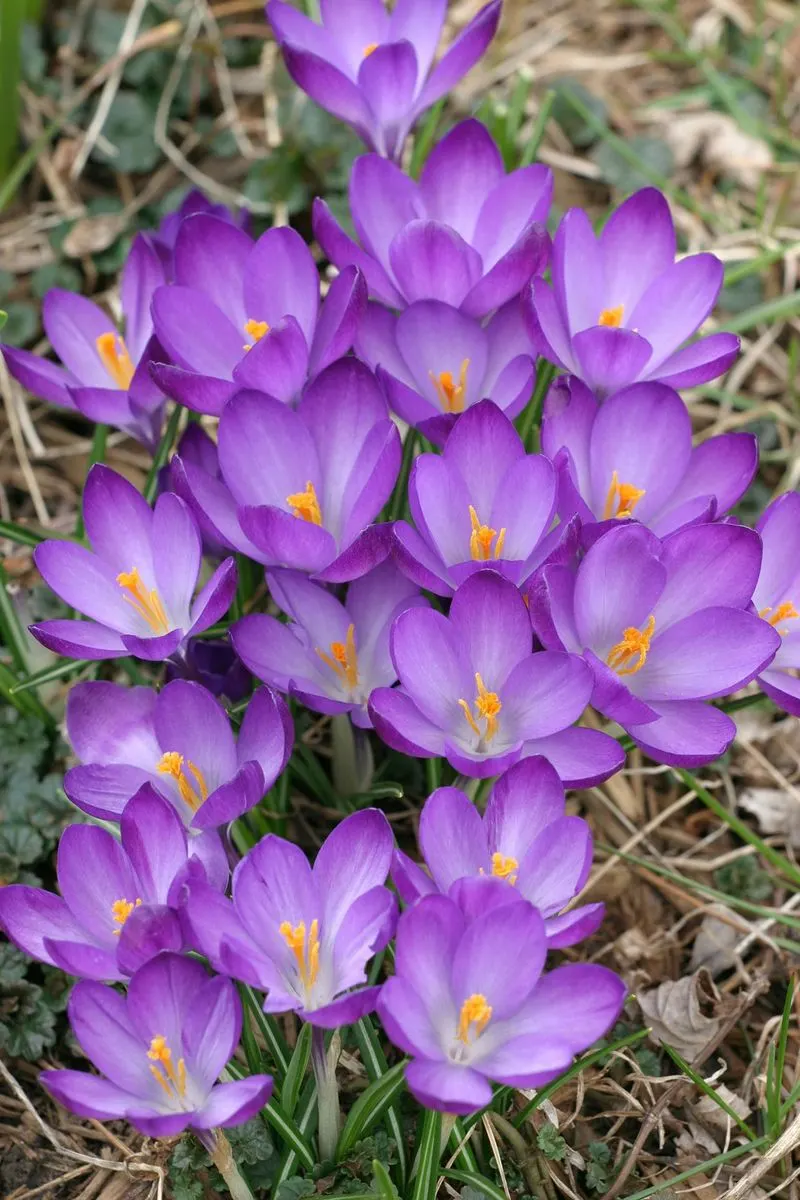
Violets, with their charming deep purple flowers and heart-shaped leaves, are a delightful addition to any spring landscape. These hardy perennials thrive in shaded spots and woodland gardens. Violets are not only beautiful but also beneficial, attracting pollinators such as bees and butterflies. Their ability to spread quickly and cover ground makes them ideal for filling in gaps in the garden. With little care needed, violets can naturalize easily, creating a lush carpet of color. Their presence signals spring’s warmth and the vibrant life it brings.
Pulmonaria
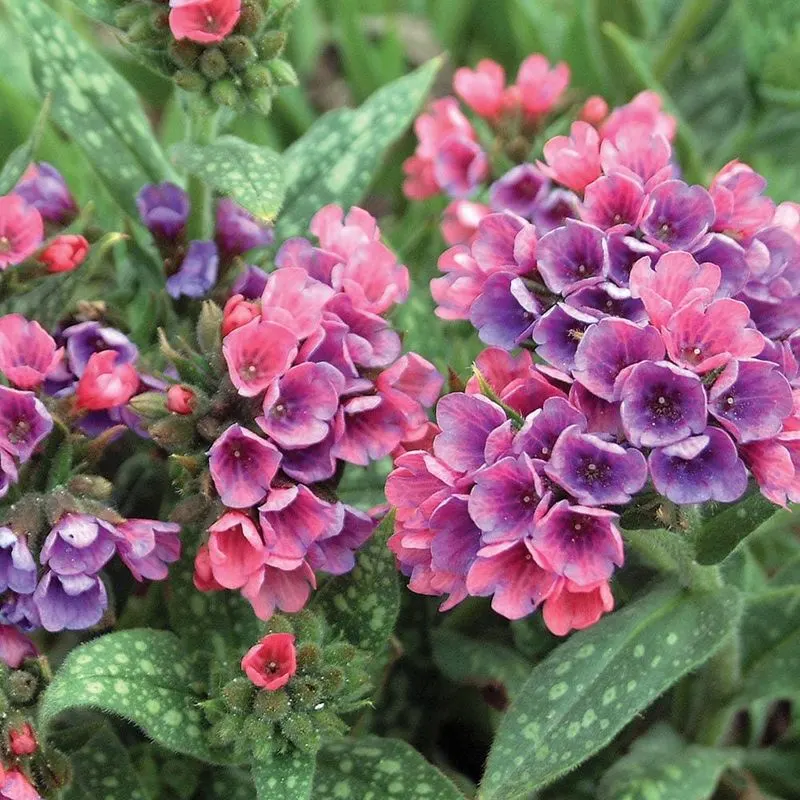
Pulmonaria, or lungwort, features speckled leaves and charming clusters of pink and blue flowers. These shade-loving perennials bloom early, often surprising gardeners with their resilience. Ideal for woodland gardens, pulmonaria thrives in moist, well-drained soil. The flowers start pink and mature to blue, adding dynamic color to shaded areas. Pulmonaria is low-maintenance, requiring little more than occasional watering. Their unique foliage continues to provide interest even after blooming. Perfect for naturalistic settings, these plants encourage a lively garden full of texture and color, welcoming the new season.
Pasque Flower
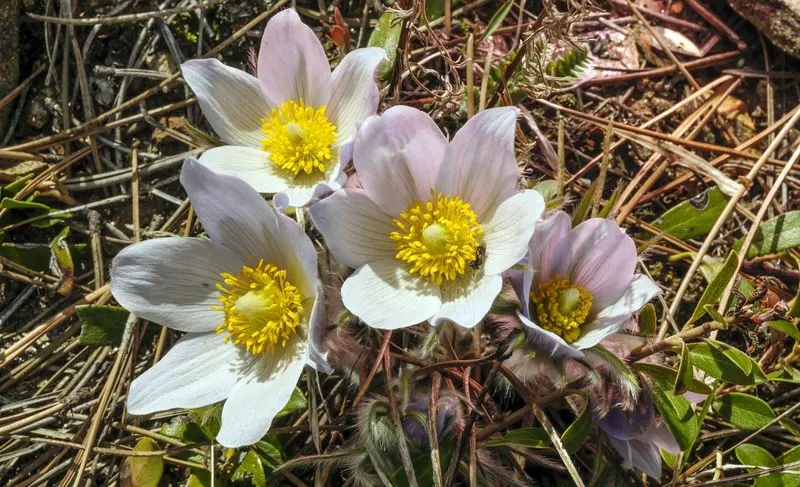
Pasque flowers are known for their silky purple petals and fluffy white centers, adding a unique touch to early spring gardens. These perennial favorites thrive in sunny, well-drained areas, often found in alpine and rocky gardens. Pasque flowers are resilient, withstanding cold and harsh conditions. Their delicate blooms and feathery foliage make them a standout in any garden. As they naturalize, they create stunning clusters of color. Gardeners appreciate their ability to attract pollinators, making them a beautiful and beneficial addition to the landscape.
Trillium
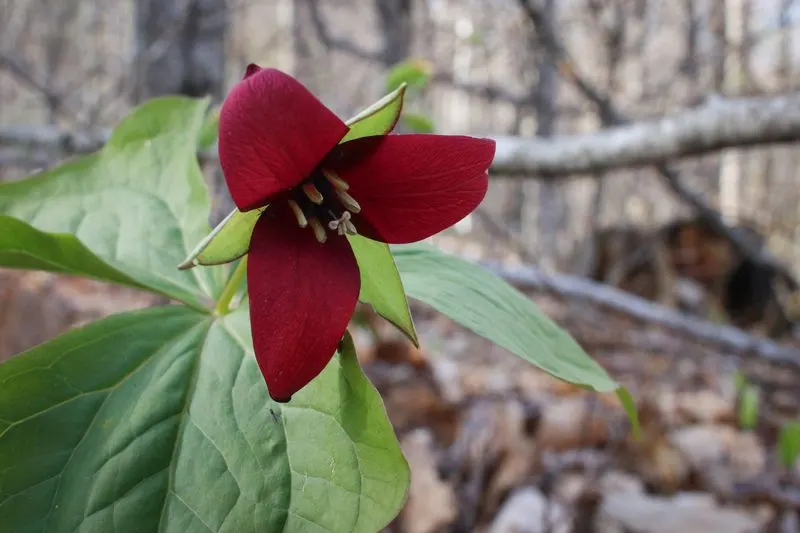
Trilliums, with their distinctive three-petaled flowers, add elegance to shaded woodland gardens. These wildflowers prefer rich, moist soil and a degree of patience, as they take time to establish. Trilliums are worth the wait, offering a stunning display of white, pink, or red blooms. Their subtle beauty and longevity in the garden make them a favorite among plant enthusiasts. By providing consistent moisture and gentle care, gardeners can enjoy trilliums’ charm year after year. Their presence serves as a gentle reminder of spring’s quiet awakening.
Bloodroot
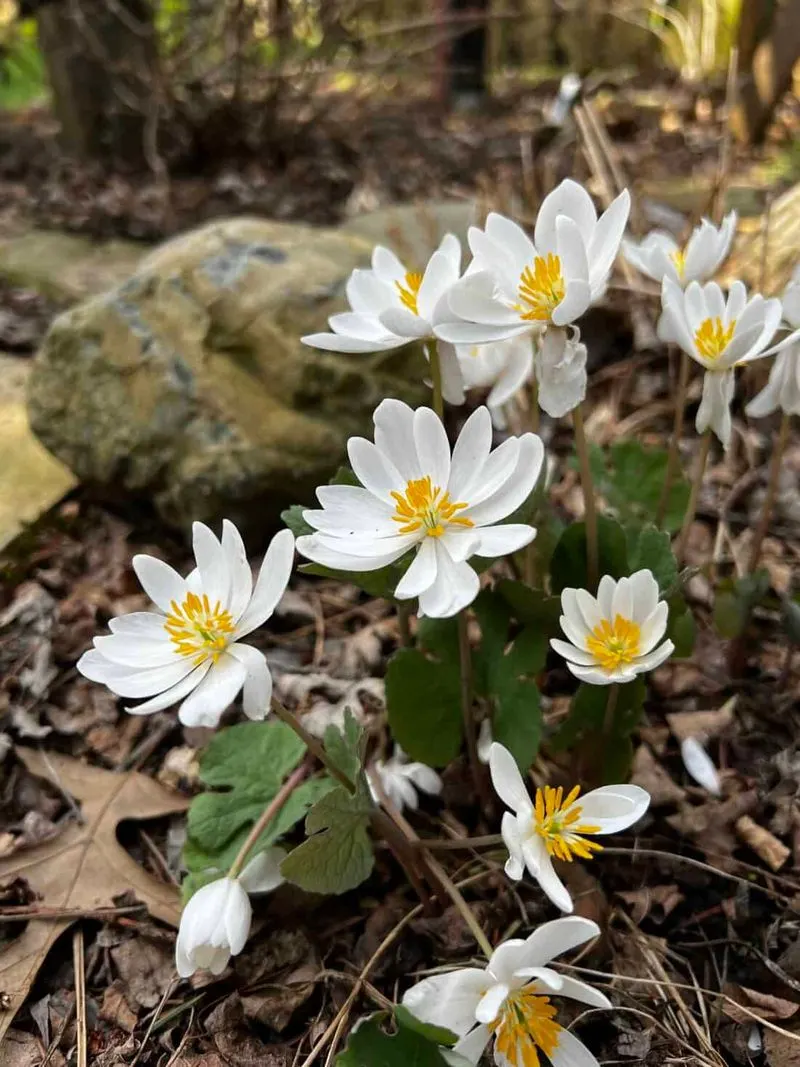
Bloodroot, named for its reddish sap, showcases pure white blooms with striking yellow centers. These ephemeral flowers emerge early, gracing woodland gardens with their beauty. Bloodroot thrives in shaded, well-drained areas, often found in forest understories. With a brief blooming period, these flowers captivate gardeners with their fleeting elegance. Bloodroot’s unique foliage adds interest, even after flowers fade. Their ability to naturalize in appropriate conditions makes them a cherished choice for native plant enthusiasts. Bloodroot is celebrated for heralding the start of a new growing season.
Scilla
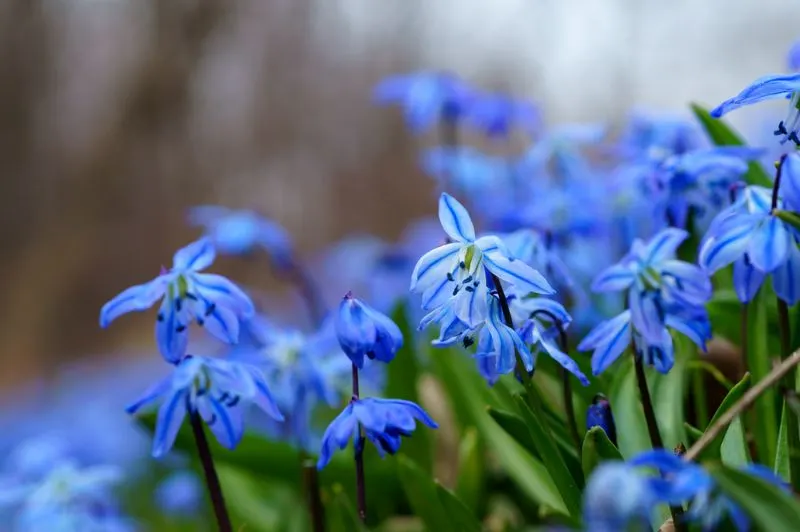
Scillas, or squills, offer a sea of blue flowers that bring life to early spring gardens. These hardy bulbs thrive in well-drained soil and prefer sunny to partially shaded areas. Scillas are known for their ability to naturalize, spreading beautifully over time. They are often found in woodland settings, where they create stunning carpets of color. Despite their delicate appearance, scillas are robust and low-maintenance. Their early blooms attract pollinators, supporting garden biodiversity. Scillas are a delightful choice for those seeking a vibrant and easy-to-grow spring display.
Winter Aconite
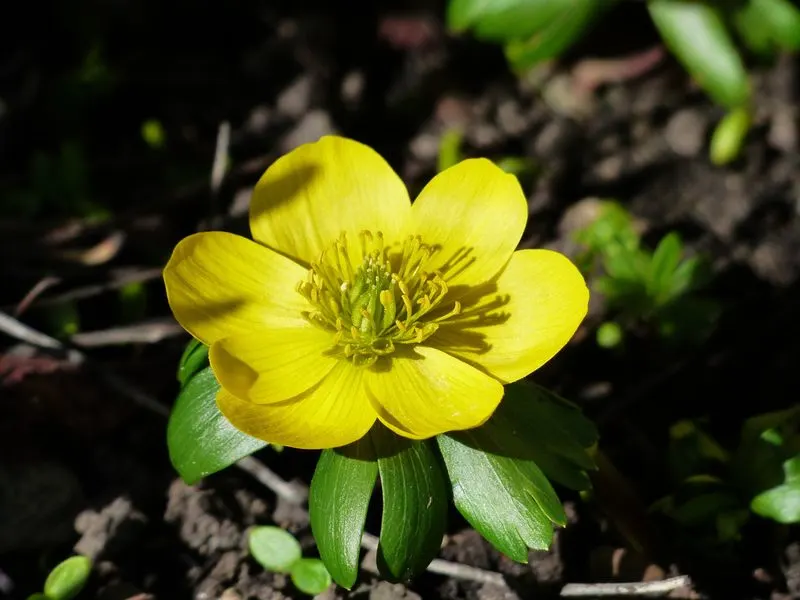
Winter aconites are among the first to bloom, their sunny yellow flowers breaking through the snow to announce spring. These hardy perennials thrive in well-drained soil and prefer sunny or lightly shaded areas. Winter aconites are loved for their ability to cover ground quickly, creating cheerful clusters of color. Their blooms are short-lived but impactful, often overlapping with the last of winter’s grip. Gardeners value their resilience and the early splash of color they bring. As a symbol of hope, winter aconites are a charming addition to any spring garden.
Chionodoxa
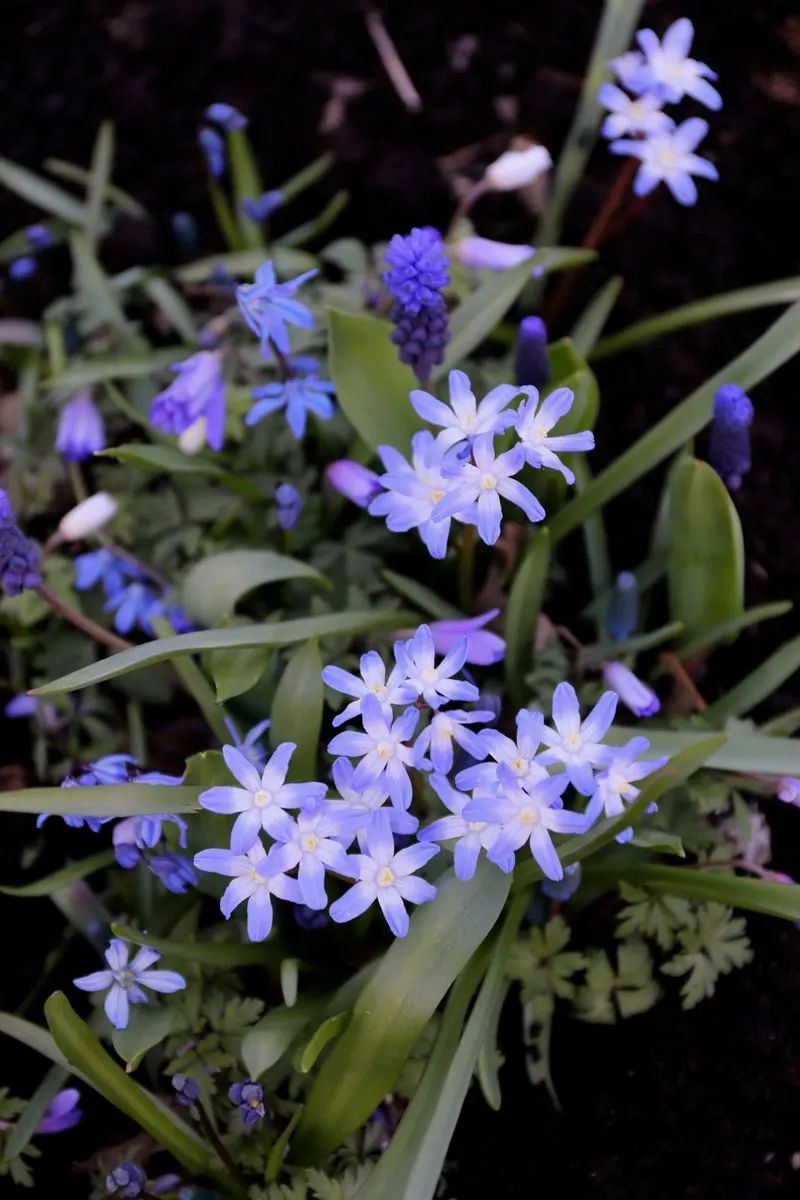
Chionodoxa, also known as glory-of-the-snow, captivates with its starry blue flowers. These bulbs are among the first to pop up as snow melts, thriving in sunny or lightly shaded areas. Chionodoxa is easy to grow, naturalizing readily to create stunning displays. Their vibrant blue hues and white centers brighten gardens, offering a cheerful start to spring. These flowers attract pollinators, supporting the garden’s early ecosystem. As a low-maintenance option, chionodoxa requires little care beyond planting. Their ability to spread over time makes them a favorite for creating colorful carpets.
Glory-of-the-Snow
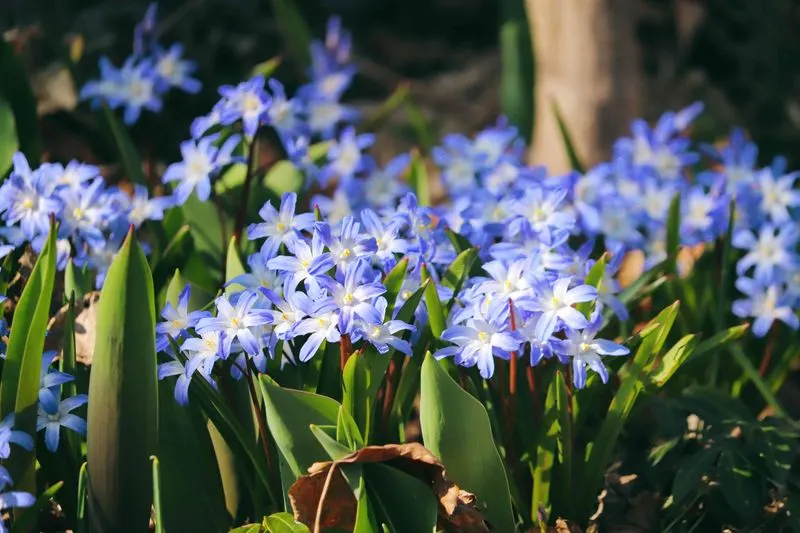
Glory-of-the-snow enchants with its bright blue blooms, among the earliest to appear as spring begins. These flowers are easy to grow, thriving in well-drained soil with full to partial sun. Their ability to naturalize makes them ideal for filling spaces with color. Glory-of-the-snow blooms simultaneously with melting snow, creating a picturesque scene. Their vibrant flowers attract early pollinators, supporting garden health. As a low-maintenance choice, they offer both beauty and ecological benefits. Gardeners appreciate their resilience and the joyous splash of color they add to the spring landscape.

